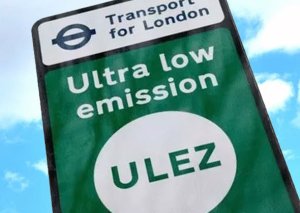 Introduction
Introduction
Technology is at the heart of the Ultra Low Emission Zone (ULEZ), making it possible to monitor, enforce, and optimize the policy effectively. From emission monitoring systems to advanced data analytics, technology ensures ULEZ operates smoothly and achieves its objectives. This article explores the various technological aspects of ULEZ and how they contribute to its success.
Emission Monitoring Systems
One of the cornerstones of ULEZ is the technology used to monitor vehicle emissions. Automatic Number Plate Recognition (ANPR) cameras are strategically placed throughout the ULEZ zone, capturing the license plates of vehicles as they enter and exit. These cameras are linked to a database that checks whether vehicles meet the required emissions standards. This real-time monitoring is crucial for ensuring compliance and enforcing penalties.
Data Analytics
Data analytics play a pivotal role in tracking air quality improvements and vehicle compliance. By analyzing vast amounts of data collected from monitoring systems, authorities can assess the effectiveness of ULEZ in reducing pollutants. This data-driven approach allows for continuous optimization of the policy, identifying trends and areas for improvement. Additionally, predictive analytics can forecast future air quality scenarios, helping to shape long-term environmental strategies.
Automated Penalty Systems
Ensuring compliance with ULEZ regulations relies heavily on automated penalty systems. When a non-compliant vehicle enters the ULEZ zone, the system automatically issues a penalty charge. This automation reduces administrative overhead and ensures that penalties are promptly and accurately administered. Furthermore, integrating payment systems with online platforms makes it easier for drivers to pay charges, reducing the likelihood of non-compliance.
Vehicle Technology
Advancements in vehicle technology have been instrumental in helping meet ULEZ standards. The rise of hybrid and electric vehicles has provided drivers with more options to comply with emissions regulations. These vehicles emit significantly fewer pollutants than their conventional counterparts, making them ideal for urban environments. Additionally, continuous improvements in battery technology and charging infrastructure are making electric vehicles more accessible and practical for everyday use.
Public Information Systems
Educating drivers about ULEZ and encouraging compliance is essential for the policy’s success. Public information systems, including websites, mobile apps, and social media campaigns, provide drivers with the information they need to understand ULEZ requirements and check their vehicle’s compliance status. These systems also offer guidance on alternative transportation options and the benefits of switching to cleaner vehicles.
Smart Infrastructure
Smart infrastructure supports ULEZ by enhancing urban mobility and reducing congestion. Smart traffic lights, for instance, can optimize traffic flow, reducing idling times and emissions. Congestion management systems use real-time data to monitor traffic conditions and adjust traffic signals accordingly. These innovations not only help reduce emissions but also improve overall transportation efficiency within the ULEZ zone.
Future Technological Developments
The future of ULEZ will likely see even more sophisticated technological advancements. Artificial intelligence (AI) and machine learning could enhance predictive analytics, providing deeper insights into air quality trends and vehicle behavior. Advanced sensors and IoT (Internet of Things) devices could offer more granular monitoring of emissions at street level. Additionally, the integration of autonomous vehicles could further reduce emissions and improve urban mobility.
Conclusion
Technology has been integral to the success of ULEZ, enabling precise monitoring, enforcement, and optimization of the policy. From emission monitoring systems to smart infrastructure, technological innovations ensure that ULEZ operates efficiently and effectively. As technology continues to evolve, it will undoubtedly play an even greater role in enhancing ULEZ and similar environmental initiatives, driving us towards a cleaner, more sustainable future.






